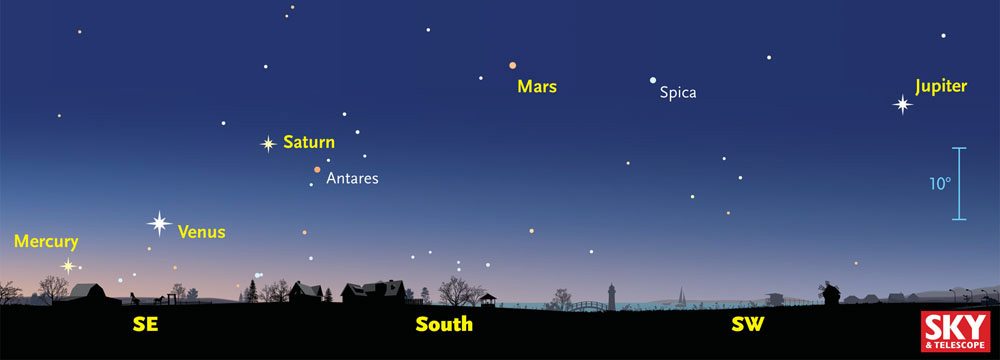A rare parade of planets is taking place in the Pacific Northwest sky.
For the first time since January 2005, five planets — Mercury, Venus, Mars, Jupiter and Saturn — share our morning sky and are visible to the naked eye, said Washington State University astronomer Guy Worthey.
The display starts with Jupiter at about 9:30 p.m.; it isn’t a full house until about 6:30 a.m. or so, when Mercury shows up.
(We’re working with round numbers because the schedule changes slightly each day for the next few weeks.)
Once Mercury rises, there will be about 45 minutes to get a good look at the five-planet alignment before dawn because — as Worthey explained — “The next thing that comes up is the sun.”
As a skywatcher looks up in the southern sky, the array will extend from the southeast to the west. At this stage, the key to catching all five is to locate Mercury low above the eastern horizon before sunrise, said science educator Jim Todd.
“Mercury will reach its highest point from Feb. 4 through Feb. 7,” said Todd, director of space science education at Oregon Museum of Science and Industry in Portland.
After Jupiter kicks things off — “It should be well up in the sky by 10 p.m. and super bright,” Worthey said — there is a lag. Mars appears at about 2 a.m., followed by Saturn at 4:30 a.m., Venus at 5:30 a.m. and then Mercury.
That is the biggest complement of planets that people (the vast majority, anyway) have ever seen with the naked eye.
“These were the five planets that were known to the ancients,” Worthey said. Without optical help, “Only ‘visual athletes’ can see Uranus. Nobody can see Neptune.”
While the planets will be aligned until Feb. 20, the display will be most visible during the next two weeks. It will return this summer, Aug. 13 to Aug. 19, with Mercury and Venus very low in the west at dusk, Todd said.




